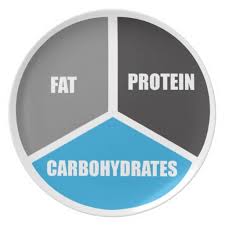 It goes without saying that athletes would benefit from eating differently from the majority of the sedentary population.
It goes without saying that athletes would benefit from eating differently from the majority of the sedentary population.
The challenge with Triathlon is that the length of the various events throws up extra hurdles.
With nutrition there is definitely not a blueprint that can be followed by all but the purpose of this blog is to give you some information that you can implement in to your own routine.
Todays post is all about macronutrient breakdown and how you can optimise it to suit your needs.
Macronutrients are Protein, Carbohydrates and Fat and the ratio of these will have an influence on your body composition, performance and recovery.
As we know, carbohydrate is the bodies preferred fuel source and as such in this instance it will make up the majority of our macros. This will help fuel your sessions, and help with your recovery.
We will particularly use carbohydrates in more intense sessions.
I would recommend starting with 50% carbs – increase if you lose weight easily, reduce if you find it hard to lose weight
As the session lengthens fat becomes an important fuel source. The problem with fat is that there are so many sources, some really good, some terrible and some inbetween. I will address this further in a later article.
We want to make sure our fats come from good sources such as uncooked olive oil (heating changes the chemical nature of it), coconut oil, avocado, oily fish, nuts and seeds etc
As carbs increase/decrease so does fat. Start with 25% fat – if your carbs go up, your fats go down and vice versa.
Protein will only really be used as a fuel source if there is insufficient carbohydrate in the body – something we will want to avoid as this will lead to muscle loss.
As we know protein helps repair and rebuild, so is particularly beneficial after exercise – particularly intense sessions.
Protein stays the most consistent at around about 25%. If you feel your are losing muscle, increase.
In terms of individualising things further – considerations include volume of training, intensity of training, body type and previous nutrition.
For example, if you are an endomorph (shot putter type) you will need to reduce your carbohydrate to prevent extra fat storage – if you already have low body fat you will do the opposite and up your carbs.
If you are training for an ironman you will need to increase your carbohydrate level.
If your training is highly intense but low on volume you can up your protein to help with muscle recovery.
I hope this hasn’t left you more confused than before I started but perhaps highlighted just how individual nutrition is to your physiology, event, phase of training etc.
This is a rough guide and should help, particularly if you decide to track your macros. One of the best ways to do this is on an app like my fitness pal. The results are sometimes very interesting.
I will point out that I have absolutely no problem with anyone disagreeing with this, however I have found that this is a good starting point with my clients – things however do change as the body adapts.